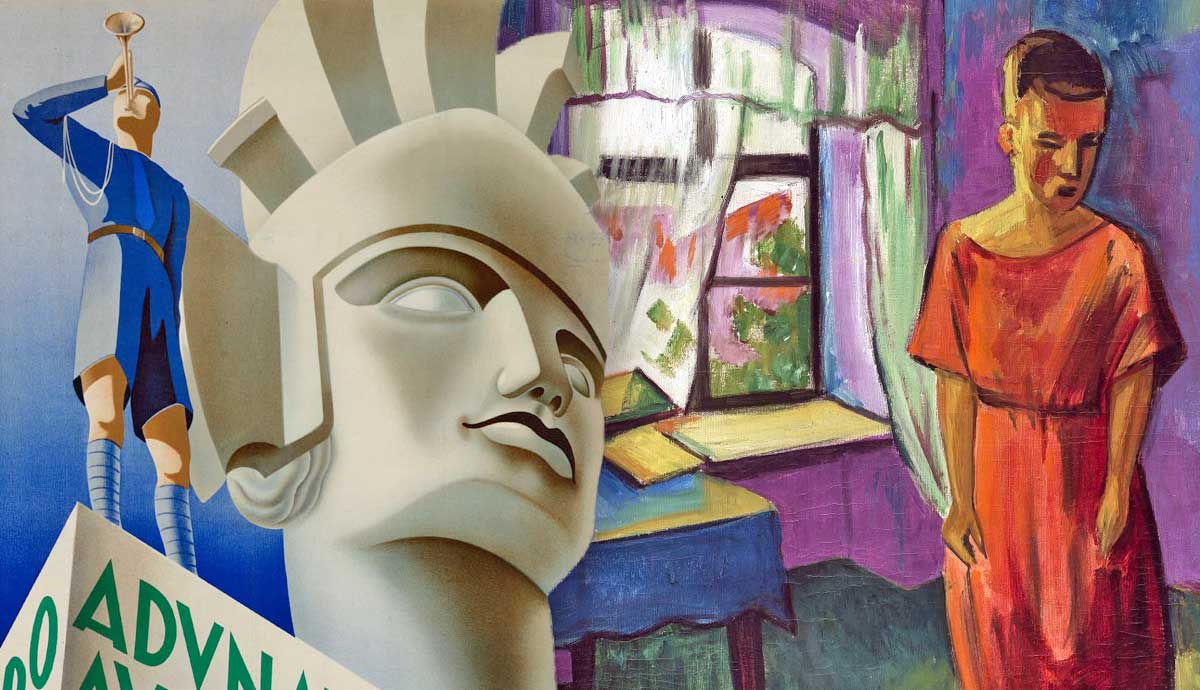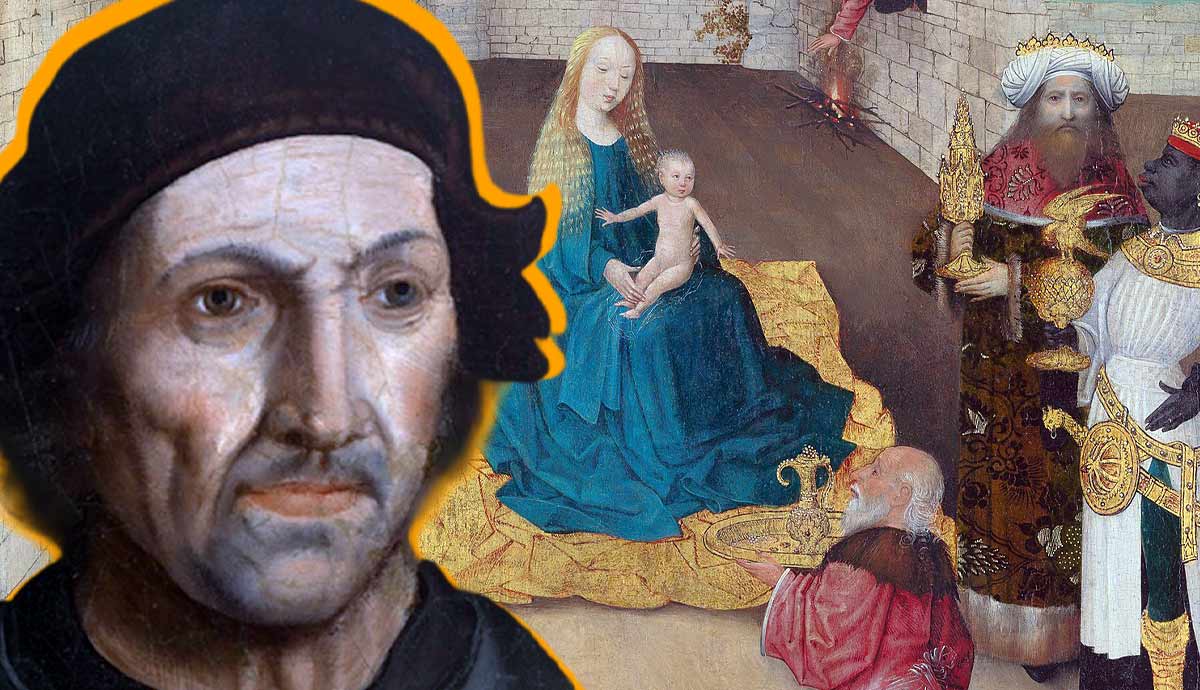
Modernism was an intellectual movement of the early twentieth century that relied on the desire to revolutionize the culture of the changing industrialized world by challenging traditional forms of expression. The opposite reaction to modernist freedom of thought was the restrictive and ultra-nationalist doctrine of fascism. The newly emerged fascist states of Germany, Italy, and Spain mercilessly prosecuted creatives who did not agree with their vision of culture that relied on conservative values. Read on to explore the complex relationship between fascism and modernism in art and design.
Fascism and Modernism: Are They Mutually Exclusive?

Modernism is essentially the lens of perceiving the world and a new way of thinking that came into function in the twentieth century. The social, political, economic, and industrial change forced a change of perspective, offering an alternative to centuries-long traditions. Modernist art and literature offered to re-examine one’s existence, and search for new ways of inspiration and expression. Abstract art, seemingly nonsensical expressions, and fluid forms with little to no references to the past were all typical for modernist art and design and offered a fresh new way out of a cultural crisis. It was also the influx of new ideologies and life choices that rejected the hierarchical structures of the past, or at least reinvented them.
Fascism, on the other hand, stood for everything traditional and adherent to the power structures of the past. As an oppressive ideology, it relied on strict hierarchies, and often manipulated historical facts in order to justify violent measures. Thus, the art that relied on intellectual freedom posed a threat to the newly emerged European regimes.

In Nazi Germany, forms and styles of art now commonly associated with Modernism were banned and denounced, with artists persecuted and oppressed. Particularly, the non-figurative forms of art were labeled as creations of corrupt Jewish minds seeking to destroy German national identity and spirit. Many artists fled Europe searching for a safe haven overseas. Those who were less lucky had to go underground, fearing for their lives. There were, however, those who accepted the new ideology, and eagerly adopted the demands and norms established by fascist regimes.
Fascist traditionalism was never willing to become entirely traditional. Rather, it had the impossible task of stretching a carnival costume of old-time values onto a modern body of radically different proportions. To keep the traditional family and party-approved power dynamics while maintaining a system of post-industrial production and urban mobility was impossible and hypocritical. Thus, fascist culture had to soak in at least some elements of modernist visuals in order to stay functional and competitive.
Expressionism

Expressionist art became one of the most famous targets of Nazi propaganda, with artists ridiculed and persecuted. However, this was not always the case. In the early days of Nazi Germany, Expressionist painting was not only acceptable but highly praised. Its rough lines were interpreted as the reflection of the tough German spirit and the reinvention of the Gothic tradition, so much valued by the new regime. Joseph Goebbels, the Minister of Nazi propaganda, initially supported and promoted Expressionism as the official art of the new state.

Among the most dramatic figures of German Expressionism was the painter Emil Nolde, who was a member of the Nazi party and their active supporter from the 1920s. Openly anti-Semitic, he denounced his colleague Max Pechstein, who rejected the racial policy of the Reich, by claiming Pechstein was Jewish and concealing his identity. To save his life, Pechstein had to prove his German roots to the Ministry of Propaganda. For a while, Nolde’s work was praised as distinctively Germanic, expressing the ancient and mystical force of the land.
Yet, the regime did not value Nolde’s loyalty for long, with his work soon appearing next to Pechstein’s in the infamous exhibition Degenerate Art. The main reason was Hitler’s personal opinion on art, which interpreted all non-realistic art as a sign of mental illness and Jewish conspiracy. Emil Nolde was officially banned from painting in 1941, later concealing incriminating evidence and presenting himself as a victim of the regime rather than its avid supporter.
Art Deco

Art Deco, despite its rather frivolous subject matter and, as stated by some experts, lack of ideological loyalties, still effectively expressed two of the key cultural points of the fascist doctrine: visible social hierarchies and an anti-abstract return to material order. Art Deco was a celebration of the machine age and the superiority of mankind over nature—specifically, white mankind. With its modern aesthetics, Art Deco smuggled colonial violence into the pop cultural realm through loans and interpretations of Ancient Egyptian culture. It married the millennia-old tradition with the modern advancement of technology, presenting its contemporaries as a master race, although hardly as explicitly as fascist propaganda.

Art Deco was hardly ever weaponized as a fascist aesthetic, but it comfortably existed within the new ideology. Unlike the majority of modernist design, Art Deco hardly ever tried to over-intellectualize itself, offering a simple aesthetic joy that was easily perceivable. The seemingly apolitical stance of the works by Tamara de Lempicka, for instance, easily conveyed the new aesthetic of a mechanical superhuman. Lempicka was never openly fascist herself (yet she was affiliated with several prominent fascists, like Gabriele D’Annunzio), but her art did not strive too far from the right-wing aesthetic.
In fascist Italy, Art Deco design became the perfect middle ground between the radical modernism of Futurism and neo-traditionalism. The style was widely popularized for propaganda posters and advertisements, effectively affecting those unable to comprehend text. In the 1920s, nearly a third of the Italian population was still illiterate, thus the official typography had to consider this. The expressive and bold Art Deco sent an unmistakable message about the upcoming era and revival of old traditions, nationalist pride, and future glory.
Futurism

Of the art movements closely associated with the Italian fascist regime, Futurism gets the overwhelming majority of mentions. Indeed, several years before Benito Mussolini’s rise to power, Futurism appeared as a revolutionary and proto-fascist art movement. The young Futurists praised technology, violence, war, and nationalism and, in theory, aimed to revolutionize Italy and turn it into an ultra-modern state. The movement’s leader, poet Filippo Marinetti, was close to Mussolini and had ambitions of making Futurism the official state art. Yet, Mussolini was too careful to adopt a single style or aesthetic, instead preferring to use all available opportunities to visualize his ideology. Still, the Futurists’ obsession with technology, mechanisms, and bloodshed was symptomatic of the environment they were born into.

The war-mongering, militaristic, and violent movement was too incoherent and radical to stay relevant for too long. The architectural projects of the Futurists were mostly utopian and unlivable, forever remaining in the form of blueprints. Moreover, one of the central points of Futurist thinking was to get rid of all references and remnants of the aesthetic past, forging a new visual language. Ironically, this claim was absurdly similar to the one made by the artists on the opposing side of the political spectrum—the Soviet Constructivists. The Futurists’ attack on tradition was appealing at first to the young radicals, yet it did not meet much enthusiasm among the wider public. Moreover, in Nazi Germany, Italian Futurism was labeled as yet another instance of degenerative art and even included in propagandist exhibitions of the same name.
Modernism’s Bauhaus in Nazi Germany

The experimental state-sponsored art school of Bauhaus existed only for a short while, yet its effects on modern art and design were immense. Contrary to the decorative aesthetic of Art Deco, the Bauhaus lacked ornamentation and rejected symmetry in favor of minimalist yet complexly balanced forms. Bauhaus offered many opportunities for its students, but one of its most prominent and remarkable departments was the printing workshop, which focused on typography and font design.

After the Nazis came to power in Germany, Bauhaus was disbanded, with all design innovations implemented by the school immediately banned. Karl Straub, one of the Nazi architects, criticized Bauhaus architecture for the absence of roots in both metaphorical and physical sense. The asymmetrical, floating constructions of Bauhaus architects lacked a visible steady foundation, severing the contact with land and soil, crucial to the Nazi ideology. In the German press, the Bauhaus school was referred to as the synagogue and denounced as the center of Jewish intellectualism.
Yet, despite persecution, Bauhaus left its mark on the face of Nazi Germany. For instance, the 1935 project for highways that would connect all parts of Germany was clearly inspired by the sleek and effective modernist visions of Bauhaus. However, the most significant and striking element of the Bauhaus legacy in Nazi Germany was also the most disturbing one. In the mid-1930s, a former Bauhaus student and anti-fascist resistance member Franz Ehrlich was arrested and sent to Buchenwald concentration camp. Ehrlich’s occupation as an architect became the principal reason for his survival. During his years in Buchenwald, he designed several structures for the complex. Including the infamous entry gate with the slogan Jedem das Seine (To Each His Own).










